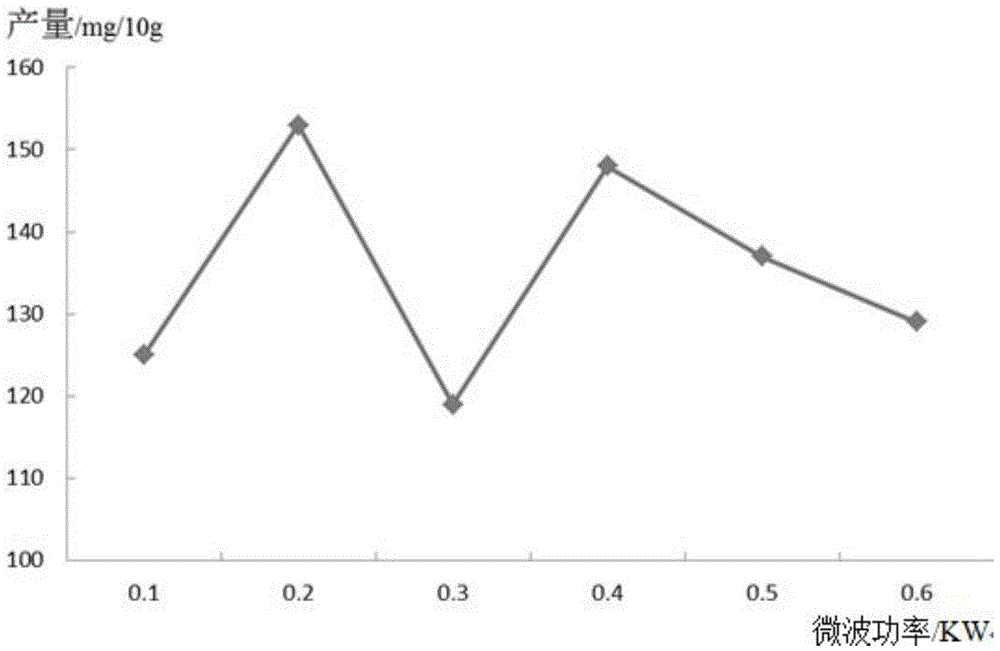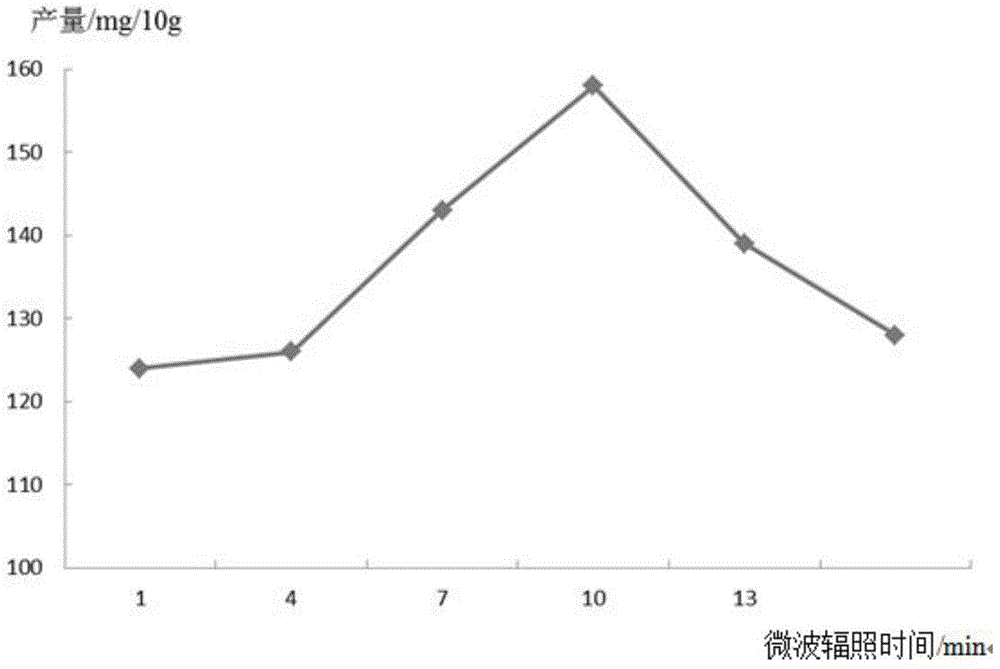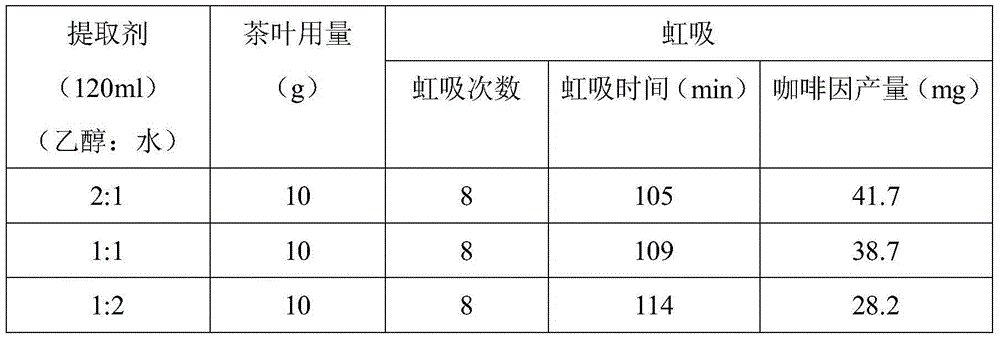Method for extracting caffeine from tea
A technology of caffeine and tea, applied in the direction of organic chemistry, can solve the problems of environmental pollution, resource loss, etc., and achieve the effect of no chemical raw material residue, low cost and good effect
- Summary
- Abstract
- Description
- Claims
- Application Information
AI Technical Summary
Problems solved by technology
Method used
Image
Examples
Embodiment 1
[0033] (1) Extraction: Add 25ml of 95% ethanol and zeolite in a 100ml round bottom flask, and install a Soxhlet extractor. Put the paper sleeve containing 10g of tea powder into the Soxhlet extractor, install a serpentine condenser, and add an appropriate amount of ethanol from its upper opening until it just siphons down.
[0034] (2) Heating to reflux for about two hours, the color of the extract becomes lighter and the extraction can be terminated.
[0035] (3) Transfer the extract to a 100ml distillation product, add several zeolites, install a distillation device, and carry out distillation. .
[0036] (4) Pour the remaining liquid into an evaporating dish, rinse the flask with a small amount of ethanol, put it into the evaporating dish, add 3g of quicklime, stir on a steam bath, evaporate to dryness, and grind to a light green powder.
[0037] (5) Sublimation: Cover the evaporating dish with the sample with a piece of filter paper, and then carry out sublimation.
[0...
Embodiment 2
[0041] The improvement of embodiment 2 heating mode
[0042] The specific test steps are the same as in Example 1, except that the heating method is changed.
[0043] Many heating methods are analyzed from the stability and effect of heating. The following heating methods are mainly used for comparison. The experimental results are as follows:
[0044] way to heat up
[0045] From the above table, it can be seen that the heating effect of the electric heating mantle is more obvious than that of the alcohol lamp, and the obtained caffeine yield is higher. The reason is that the heating of the alcohol lamp is uneven and the temperature is not easy to control, while the heating of the electric heating mantle is stable and easy to control the temperature.
Embodiment 3
[0046] The improvement of embodiment 3 extractant
[0047] The specific test steps are the same as in Example 1, except that the extractant is changed.
[0048] Water, aqueous ethanol and acetone are mainly used as extractants. Under the same other conditions and only the extractant is changed, the experiments are compared to draw conclusions. The experimental results are as follows:
[0049] Types of extractants
water
ethanol
Amount of tea (g)
10
10
10
Solvent consumption (ml)
120
120
120
Siphon times
8
8
8
Siphon time(min)
145
124
102
Caffeine production (mg)
23.5
57.4
41.5
[0050] As can be seen from the above table, it can be seen that the yield obtained by using ethanol as the extractant is higher, and the siphon time of water as the extractant is longer, and it is difficult to effectively remove during distillation, resulting in partial lo...
PUM
 Login to View More
Login to View More Abstract
Description
Claims
Application Information
 Login to View More
Login to View More - R&D
- Intellectual Property
- Life Sciences
- Materials
- Tech Scout
- Unparalleled Data Quality
- Higher Quality Content
- 60% Fewer Hallucinations
Browse by: Latest US Patents, China's latest patents, Technical Efficacy Thesaurus, Application Domain, Technology Topic, Popular Technical Reports.
© 2025 PatSnap. All rights reserved.Legal|Privacy policy|Modern Slavery Act Transparency Statement|Sitemap|About US| Contact US: help@patsnap.com



